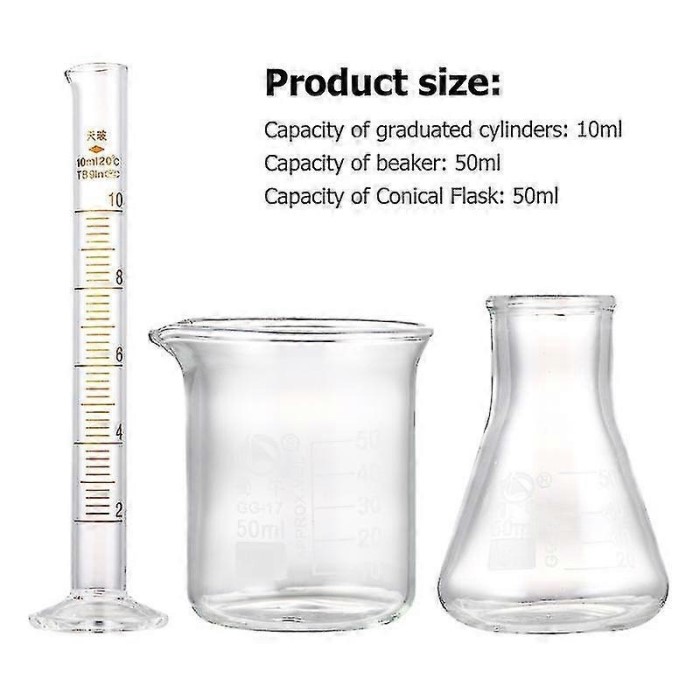Introduction to Beaker and Flask
Beaker vs Flask are popular tools used in software development. They are both vital, but they serve different purposes. Understanding their differences can help you choose the right tool for your tasks. Let’s explore their core functionalities and features.

Overview of Beaker
Beaker is a session and caching library in Python. Its primary purpose is to manage user sessions effectively. It enables developers to cache data for quick access. Beaker supports multiple backends like memory, file, and databases. Developers often use it for web applications requiring session management.
Overview of Flask
Flask is a micro web framework in Python. It is highly flexible and lightweight. Flask allows developers to build web applications quickly. It supports extensions for features like database integration, authentication, and more. Flask is often chosen for projects prioritizing simplicity and scalability.
Core Functionalities and Use Cases
What is Beaker Used For?
Beaker is mainly used for managing sessions in web applications. It lets developers store and retrieve user session data efficiently. It supports caching to improve application speed. Beaker integrates with various storage backends like memory, files, and databases. Developers often use it in applications needing secure and flexible session handling.
Key use cases for Beaker:
- Web applications requiring persistent user sessions.
- Projects needing quick data caching for better performance.
- Applications that must manage multiple user sessions effectively.
What is Flask Used For?
Flask is a lightweight web framework ideal for building web applications. It provides tools for routing, communicating with databases, and handling user requests. Flask is highly modular, allowing developers to add only necessary functionalities. It supports extensions like authentication, database interaction, and API creation.
Key use cases for Flask:
- Developing simple web applications or prototypes quickly.
- Projects focusing on scalability and custom feature integration.
- Building RESTful APIs and microservices efficiently.
Architecture and Design Differences
Understanding the architecture and design differences between beaker vs flask is vital. Each tool has unique characteristics that cater to specific needs. Let’s examine their structures in depth.
Beaker’s Architecture Explained
Beaker is structured as a lightweight library. It focuses on session management and caching. Its modular design allows developers to use only required components.
Key aspects of Beaker’s architecture:
- Backend Flexibility: Beaker supports multiple storage backends like memory, files, and databases.
- Session Management: It excels at handling user sessions securely and efficiently.
- Caching System: Beaker includes a robust caching system to speed up data retrieval.
- Simplicity: Its design makes it easy to integrate with web frameworks such as Flask.
This architecture helps simplify session handling in complex applications.
Flask’s Architecture Explained
Flask is designed as a microframework. It prioritizes simplicity and extensibility, with minimal dependencies. Developers can adapt Flask’s modular structure for various application needs.
Key aspects of Flask’s architecture:
- Core Simplicity: Flask includes only essential tools, like routing and request handling.
- Extension Support: Its flexibility allows adding extensions such as ORM tools or authentication systems.
- WSGI Compatibility: Flask operates with the Web Server Gateway Interface, ensuring seamless server interactions.
- Blueprints: Its blueprint feature aids in structuring larger applications effectively.
This architecture enables Flask to build scalable and feature-rich web applications with ease.
Key Features Comparison
Understanding the key features of Beaker and Flask is crucial for selecting the right tool. Each offers distinct functionalities tailored to specific development needs. Let’s break down their core features.
Highlighted Features of Beaker
Beaker is designed to excel at session management and caching in web applications. Below are its standout features:
- Session Handling: Beaker efficiently manages user sessions, ensuring secure and persistent data storage.
- Caching System: Its robust caching mechanism improves data retrieval speed for web applications.
- Backend Support: Beaker works seamlessly with memory, files, and databases for storage needs.
- Integration Capabilities: It integrates smoothly with frameworks like Flask, enhancing functionality.
- Lightweight Design: Beaker’s modular architecture lets developers use only the required components.
These features make Beaker a reliable choice for projects needing robust session handling and caching.
Highlighted Features of Flask
Flask is best known for its simplicity, scalability, and flexibility as a web framework. Here are its key features:
- Minimal Core: Flask includes essential tools like routing and request handling to keep things simple.
- Extension Support: Developers can easily add extensions for database interaction or authentication.
- Blueprints: Flask’s blueprint feature helps structure larger applications for better organization.
- Modularity: It allows developers to use only necessary components, making customization easy.
- WSGI Compatibility: Flask operates efficiently with the Web Server Gateway Interface for smooth server interactions.
These features make Flask ideal for building scalable, lightweight, and modular web applications.
Performance and Scalability
Performance and scalability are critical factors when choosing between beaker vs flask. Each tool offers unique strengths in these areas, tailored to specific development goals.
Performance Metrics of Beaker
Beaker focuses on speed and efficiency for session management and caching. Its lightweight architecture ensures quick data retrieval and processing.
Key performance metrics of Beaker:
- Fast Caching: Beaker’s caching system reduces latency and improves application response times.
- Session Efficiency: It handles user sessions securely while maintaining consistent speed under heavy loads.
- Backend Optimization: Compatibility with memory, files, and databases helps optimize performance across different setups.
Beaker’s performance shines in applications requiring secure and efficient session handling.
Flask’s Scalability and Performance
Flask excels in scalability and performs well in both small and large applications. Its modular structure simplifies scaling without sacrificing speed.
Key aspects of Flask’s scalability and performance:
- Lightweight Core: Flask’s minimal dependencies keep applications running fast and efficiently.
- Extension Support: Adding extensions like database tools enables seamless functionality scaling.
- Blueprints for Scalability: Flask’s blueprint feature allows developers to organize and expand applications effectively.
- WSGI Efficiency: Operating with the Web Server Gateway Interface enhances server communication speed.
Flask is ideal for projects needing modular design and smooth scalability for feature-rich applications.
Pros and Cons of Beaker and Flask
Understanding the pros and cons of beaker vs flask helps developers make informed choices.
Advantages and Disadvantages of Beaker
Beaker is known for its effective session handling and caching capabilities. Here are its advantages:
Advantages:
- Efficient Session Management: Beaker securely stores and retrieves session data.
- Flexible Backend Support: It works seamlessly with memory, files, and databases.
- Improved Performance: Its caching system accelerates data access and response time.
- Lightweight Design: Beaker’s modular setup avoids unnecessary complexity.
- Easy Integration: It integrates smoothly with frameworks like Flask.
However, Beaker does have some limitations:
Disadvantages:
- Limited Scope: Focuses only on sessions and caching, lacking broader web development tools.
- Learning Curve: Requires developers to understand backend configurations for optimal use.
- Dependency on Frameworks: Often dependent on frameworks for complete functionality.
Advantages and Disadvantages of Flask
Flask excels as a flexible web framework, but it isn’t free of drawbacks. Below are its pros:
Advantages:
- Lightweight Framework: Minimal core makes Flask fast and adaptable.
- Modularity: Developers can add only necessary features, ensuring customization.
- Scalability: Blueprint support helps in scaling applications efficiently.
- Extension Availability: Many extensions simplify tasks like database and authentication.
- Easy to Learn: Flask’s simple structure is beginner-friendly.
Flask also has certain disadvantages:
Disadvantages:
Manual Components
- Role of Developers: In many frameworks, developers are required to handle various components manually, which often includes crucial features like caching. Caching is vital for improving performance by temporarily storing frequently accessed data, thereby reducing load times and server strain.
- Management Challenges: Since caching must be managed manually, developers need to implement the logic for when to cache data, how long to retain it, and when to invalidate or update the cache. This additional responsibility can lead to increased complexity in the codebase and may introduce the possibility of errors if not handled correctly.
- Trade-offs Involved: While manual management offers flexibility, it can also be time-consuming. Developers may find themselves spending considerable time on optimization tasks instead of focusing on other essential features of the application.
Limited Built-in Tools
- Need for Extensions: Out-of-the-box, many frameworks provide a fundamental set of features, but they often lack advanced tools that developers might require for more sophisticated applications. Common advanced functionalities include user authentication, payment processing, or real-time data handling.
- Adding Functionality: To achieve these advanced capabilities, developers usually need to rely on third-party extensions or libraries. While extensions can enhance the original framework, sourcing reliable and compatible tools involves additional research and integration work.
- Complexity from Additional Dependencies: Integrating various extensions can also introduce potential compatibility issues. Each library might have its own dependencies, and managing these can lead to a bloated application that is harder to maintain.
Complex Scaling
- Challenges with Larger Applications: When an application grows in size and complexity, addressing scalability becomes essential. Larger applications can encounter numerous performance challenges, especially when user demand increases or the data volume expands.
- Additional Planning Required: Developers must carefully plan for scalability from the outset, rather than retrofitting the application later. This involves considerations such as load balancing, database optimization, and possibly transitioning to microservices architecture. Missing these planning stages can lead to performance bottlenecks and a negative user experience.
- Scalability Strategies: Effective strategies for ensuring scalability may include horizontal scaling (adding more server instances) and vertical scaling (upgrading existing server capacity). Developers must evaluate which approach aligns best with their application’s architecture and future growth projections.
No Opinionated Design
- Flexibility vs. Structure: One of the advantages of some frameworks is their flexibility, allowing developers to implement their design choices without strict guidelines. However, this can lead to a double-edged sword scenario, especially for new developers.
- Navigating the Lack of Standards: Without predefined structures or conventions, new developers may feel overwhelmed and unsure about best practices. This lack of guidance can result in inconsistent code, making teamwork difficult since different developers may adopt varying standards in their implementations.
- Potential for Confusion: This situation can lead to confusion and an increased learning curve, as new developers might struggle to establish their workflows or project architectures without the support of established patterns. A clear design philosophy can often simplify development processes and enhance collaboration among team members.
By comparing these pros and cons, developers can choose the tool that suits their project needs better.
Use Cases and Real-World Applications
Understanding when to use beaker vs flask can aid in making better choices. Each tool has strengths suited for specific scenarios. Below, we discuss situations where each tool excels.
When to Choose Beaker
Beaker is primarily beneficial for projects that require efficient session management and caching. It works well in scenarios where secure and persistent data storage is a priority. Here are some instances when Beaker is the ideal choice:
- Session-Intensive Applications: Applications with multiple user sessions benefit from Beaker’s secure session management.
- Performance-Critical Projects: Use Beaker to cache frequently accessed data and boost application speed.
- Flexible Backend Needs: Choose Beaker for projects that rely on different storage systems.
- Integration with Frameworks: If your web framework lacks built-in sessions, Beaker integrates seamlessly to fill the gap.
Beaker shines in backend roles, complementing frameworks that lack robust session handling or caching.
When to Choose Flask
Flask is the go-to choice for building web applications quickly and effectively. Its modular codebase, scalability, and features make it a favorite for diverse use cases. Below are situations where Flask excels:
- Building Interactive Web Apps: Flask provides routing and request handling for user-facing applications.
- Creating APIs and Microservices: Its simplicity makes Flask perfect for lightweight, RESTful API structures.
- Prototyping Applications Quickly: Flask’s minimal dependencies help developers create prototypes fast.
- Scalable Projects: When growth is expected, Flask’s blueprint system supports scaling without hassle.
Flask simplifies full-stack development while enabling seamless scalability and modular customizations.
By evaluating specific requirements, developers can confidently decide whether to implement Beaker or Flask.
Conclusion
Final Thoughts on Beaker vs Flask
Choosing between beaker vs flask depends on your project needs. Beaker excels in session management and caching. It is ideal for backend roles and performance-critical tasks. Developers can use it with frameworks that need session handling enhancements.
Flask, on the other hand, is perfect for web app development. Its scalability, simplicity, and modularity support diverse use cases. Whether you’re building APIs, prototypes, or scalable applications, Flask provides flexibility and ease of use.
In summary, use Beaker for backend-focused tasks with complex session and caching needs. Select Flask for lightweight web applications and scalable project development. Both tools complement each other and work well for tailored solutions.








